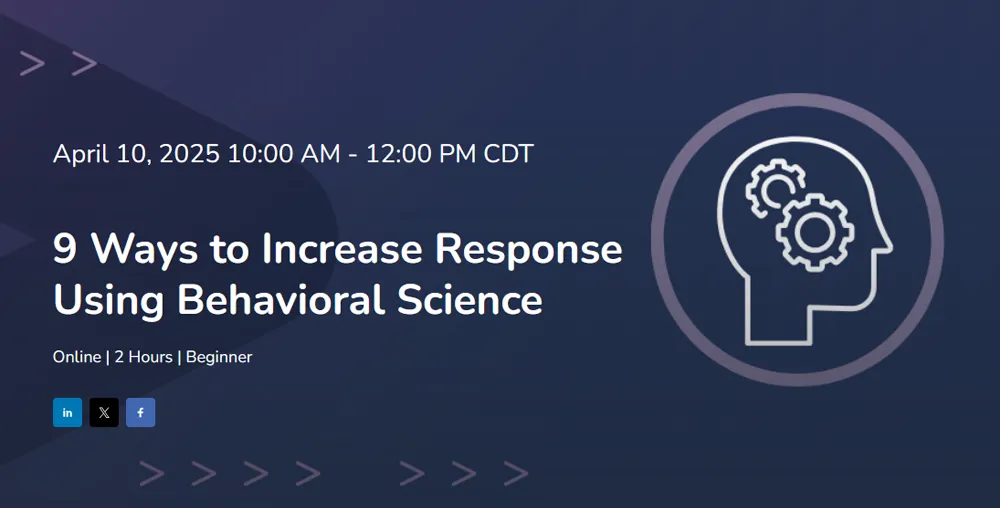In a crowded marketplace pummelled by social media noise, invasive retargeting ads and content streaming all across digital channels, it’s no surprise that marketers find it more and more challenging to reach their customers. According to the second annual Adobe Consumer Content Survey, over 1,000 consumers who own at least one digital device are spending 8.8 hours a day, on average, engaging with digital content, and that increases by two or more hours with the younger generations. That’s a lot of content consumption!
With consumers spending more than a quarter of their day engaging with digital content, it’s easy for marketers to get caught up in the commotion and let their marketing strategy fall to the wayside — especially when it’s at the end of the quarter and they’re racing the clock to report out on positive ROI. Oftentimes, marketers respond to loud noise with even louder noise. Pesky pop-ups, invasive forms and annoying AI chatbots that have no business intruding your visitor’s screen the instant they land on your webpage leave them feeling frustrated, annoyed and confused. With a relentless onslaught of “in-your-face” promotion and all this social media hoopla, what’s a marketer to do to cut through all that noise and get customers to turn their heads?
This article offers five ways for businesses to cut through the content clutter and increase their chances of building trust and loyalty with customers.
-
Have a content strategy in place. Before you get the content factory going, it’s important to have a content marketing strategy in place. While this may seem like the obvious, Content Marketing Institute and MarketingProfs report that in 2018 only 33% of content marketers had a content marketing strategy in place. Without properly doing your homework: scoping out the work it takes to build a content strategy and framework, researching and understanding your target audience, developing business objectives to align with departmental goals, and having measurable goals and key performance indicators, you’re not setting up your team for success nor are you creating content that’s properly going to reflect your brand positioning, marketplace insights and consumer behavior. As such, it’s easy to develop content and contribute to the noise, but it’s likely you won’t create meaningful content that provides value and gives your customers the optimal experience wherever they are in the buyer’s journey.
-
Move from an ‘Inside Out’ to an ‘Outside In’ approach. When it comes to creating a sound content marketing strategy, doing a content audit, conducting informational interviews with your business partners and pulling insights reports from Google Analytics and Tableau is a necessary first step in laying the foundation, but don’t get caught up with sources that stem only from your internal teams. Product, Engineering, Sales, Technical Support and other such teams are vested and have the best interest in the company, but they may not fully understand the customer or customer intent. Don’t be afraid to go straight to the source yourself and take an ‘Outside In’ approach to get a deeper understanding of your customer base. It may be daunting if you don’t have the budget to conduct customer conferences or research studies, but with so many digital tools at our fingertips, it’s now easy to get customer feedback with having to make the case for an increased budget. Sources like LinkedIn and your social media channels, third party review sites (Amazon Customer Reviews, Angie’s List, Trustpilot, Yelp) and live events or meetups are extremely useful in getting direct feedback from customers and picking their brains.
-
Serve up relevant content and speak their language. Once you’ve done your research and put together your content strategy, you’ll want to develop content themes that serve as input for creating well-researched articles and thought leadership content. Incorporating data-driven insights, proof points and key findings from research studies will help defend your claim and assert your credibility in the marketplace, but it may not speak directly to your audience. Articles polluted with technical slang, industry jargon or too many acronyms may require people to read your article forwards and backwards to fully understand it. But guess what, your audience won’t give it their time of day. Chances are if you’re not speaking their language and participating in their dialogue, your content will miss the mark.
-
Go where your audience goes. There’s a right time and right place to serve up content to best reach your target audience and provide them with the optimal content consumption experience. To find your audience, you’ll want to invest time in researching where your customers frequent, listening to what they have to say about your product and industry challenges they encounter, and using that information to create content that provides value and meaning for your customers. Taking an omni-channel approach in today’s digital age is highly recommended, but it’s wise to understand their patterns of behavior, how and where they consume content, and the preferred type of content. Keep in mind that you’ll want to develop content in various formats because customers consume content differently depending on the channel and where they are in the purchase cycle.
-
Find pockets of demand and go where your competitors don’t go. If you’re having trouble standing out in front of your target audience, consider finding a spot less crowded. Before companies like Uber or Airbnb became established in their domain, they too were at one point making a name for themselves and acquiring the demand of their very first customers. In Uber’s case, instead of going after passengers in the financial district or fancy hotels, Uber went after passengers waiting around after a sporting event or ballgame. These passengers who had already been waiting around for minutes even hours didn’t have much to lose when Uber came along with their trusty app and offered an alternative to this waiting game. The same goes for Airbnb in that they already knew the market for business and leisurely travelers was lost to hotels. But what happened when conferences and events came around and the cost for hotel rooms skyrocketed? In came Airbnb and a new pocket of demand. As a small or mid-sized company, don’t try to compare yourselves to the brand giants: Google, Facebook, Salesforce, LinkedIn, etc. Play in your sandbox, find businesses that are similar in size, and then find that niche market to elbow your way in.
In a time where marketing noise is louder than ever, businesses can’t afford to compete in screaming matches with their competitors, recklessly dole out content and impose intrusive marketing gimmicks in an effort to flag down customers. They need to take a more strategic and calculated approach to find their customer base, learn to speak their language, engage in a dialogue with them and determine the best way to connect with their customers. If businesses aren’t proactively following the patterns of consumer behavior and planning their next move, they will be locked in a reactionary state and become part of the marketing noise, leaving customers at the doorstep of their competitors.









Comments are closed.